This figure kind of convinced me.
These specs didn't convince me but it sure made me curious to try them. So I did. And then I listened to the results as in actually listening to music played through them. And that did convince me.
Show me ugly measurements all day long and I'm still going to believe my ears first and foremost. And with a claimed THD of 0.004% these are unlikely to be the weak link or fatal flaw in any sonic chain.

My thoughts were that THD 0.004% looks good as a number, but I wanted to see what the component does around zero. In this case: Nothing special, and that is good.
Here's a look inside of our new LDR300x.V3 Active Preamp all dressed up with VCAP reference series copper teflon output coupling caps. Amazing natural detailed sound.
LDR300x.V3 Passive or Active Preamp | Tortuga Audio
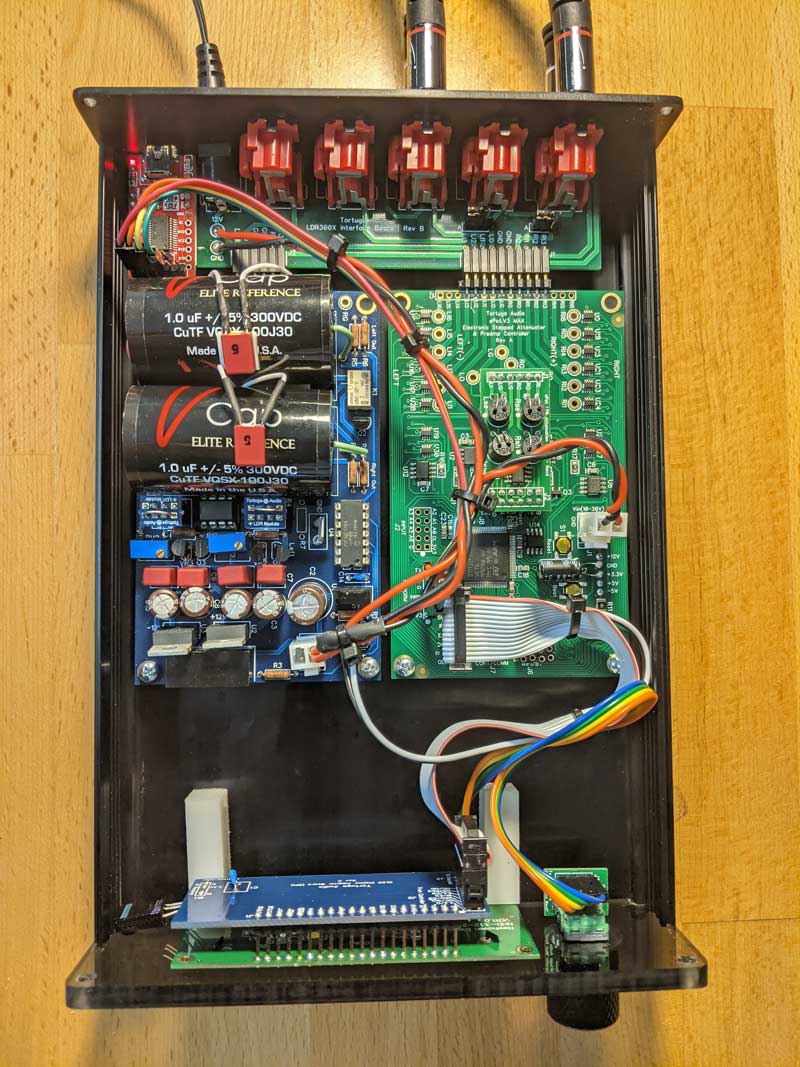
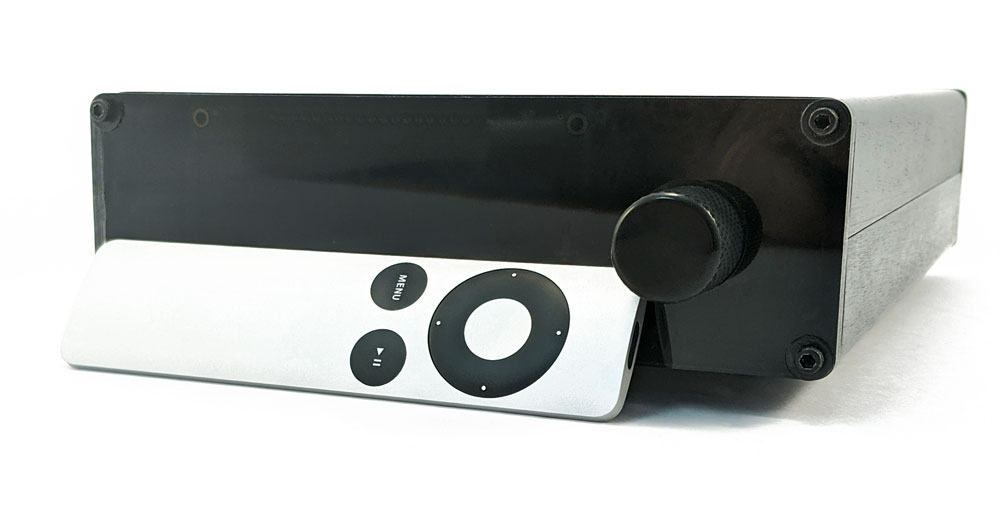
LDR300x.V3 Passive or Active Preamp | Tortuga Audio


ePot.V3 Electronic Stepped Attenuators
It's been 4+ months since the release of our ePot.V3 "Mini" and "Max" electronic stepped attenuators. Initial kinks in the firmware have been ironed out and customer feedback has been very positive. It's clear now that the adoption of precision closed loop control of the LDR current was worth all the development work and design iterations we went through to get here.
Here's a recent article we posted on the use of an Electronic Stepped Attenuator for Audio Volume Control emphasizing the use of the Mini as a substitute for a volume pot or mechanical stepped attenuator: Electronic Stepped Attenuator For Audio Volume Control | Tortuga Audio
More info on the Mini: Electronic Stepped Attenuator | ePot.V3 Mini | Tortuga Audio
More info on the Max: Electronic Stepped Attenuator | ePot.V3 Max | Tortuga Audio
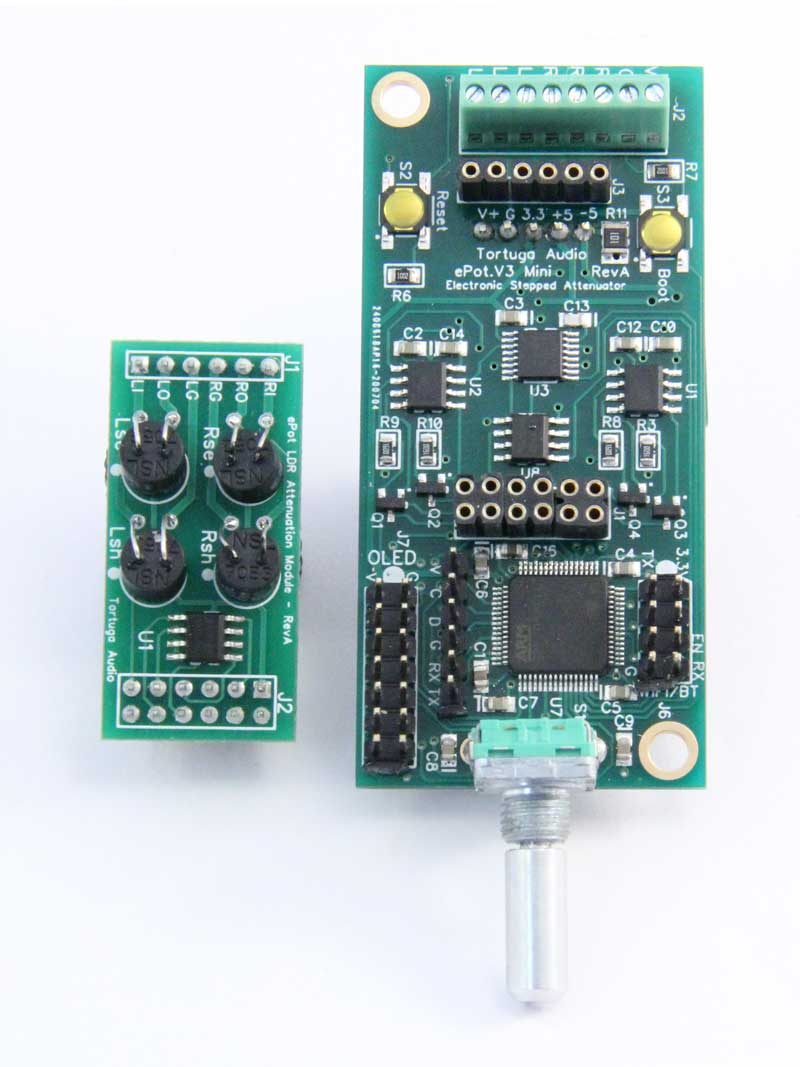
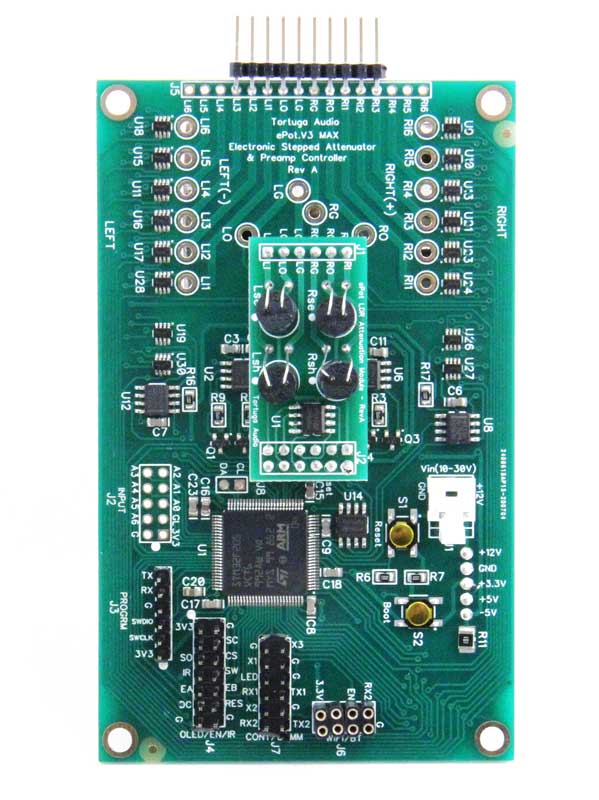
It's been 4+ months since the release of our ePot.V3 "Mini" and "Max" electronic stepped attenuators. Initial kinks in the firmware have been ironed out and customer feedback has been very positive. It's clear now that the adoption of precision closed loop control of the LDR current was worth all the development work and design iterations we went through to get here.
Here's a recent article we posted on the use of an Electronic Stepped Attenuator for Audio Volume Control emphasizing the use of the Mini as a substitute for a volume pot or mechanical stepped attenuator: Electronic Stepped Attenuator For Audio Volume Control | Tortuga Audio
More info on the Mini: Electronic Stepped Attenuator | ePot.V3 Mini | Tortuga Audio
More info on the Max: Electronic Stepped Attenuator | ePot.V3 Max | Tortuga Audio


Updated V3 Max Electronic Stepped Attenuator & Preamp Controller
It's been ~ 9 months since we released the ePot.V3 Max & Mini LDR electronic stepped attenuators & preamp controllers. We have now released an updated Rev B version that incorporates a fully redesigned power board along with a few minor hardware changes. We continue to be impressed with the V3 attenuator/controllers and have received a lot of positive feedback from our growing customer base.
The V3 Max integrates with our high contrast 256x64 bit white-on-black OLED display to create menu driven interactive attenuator/preamp-controller for either passive or active preamp applications designed around LDRs (light dependent resistors).
Info on the update V3 Max can be found via the links below:
Improved V3 Max Electronic Stepped Attenuator | Tortuga Audio
Electronic Stepped Attenuator | ePot.V3 Max | Tortuga Audio
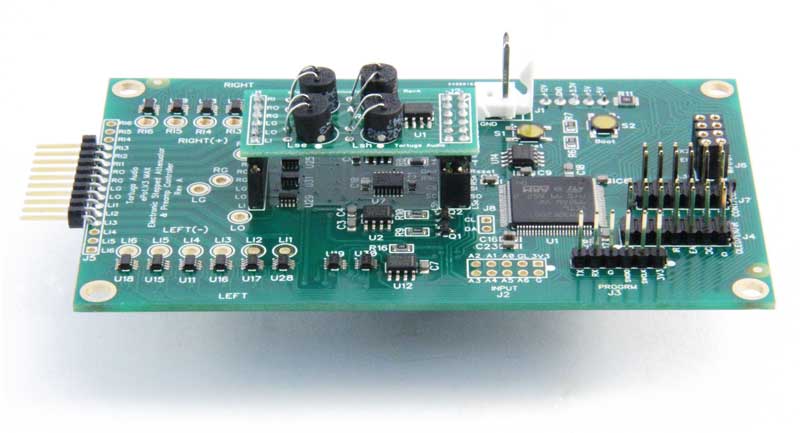
It's been ~ 9 months since we released the ePot.V3 Max & Mini LDR electronic stepped attenuators & preamp controllers. We have now released an updated Rev B version that incorporates a fully redesigned power board along with a few minor hardware changes. We continue to be impressed with the V3 attenuator/controllers and have received a lot of positive feedback from our growing customer base.
The V3 Max integrates with our high contrast 256x64 bit white-on-black OLED display to create menu driven interactive attenuator/preamp-controller for either passive or active preamp applications designed around LDRs (light dependent resistors).
Info on the update V3 Max can be found via the links below:
Improved V3 Max Electronic Stepped Attenuator | Tortuga Audio
Electronic Stepped Attenuator | ePot.V3 Max | Tortuga Audio

Example of ePot.V3 Mini in a custom tube preamp/buffer
Nice example of a customer incorporating our ePot.V3 Mini electronic stepped attenuator/controller in a custom tube buffer/preamp design.
Undergroundsound.com is based out of Australia, focuses on bespoke valve audio and is run by Stephan Kissling (kisslingst@hotmail.com)
Tube Buffer
Electronic Stepped Attenuator | ePot.V3 Mini | Tortuga Audio
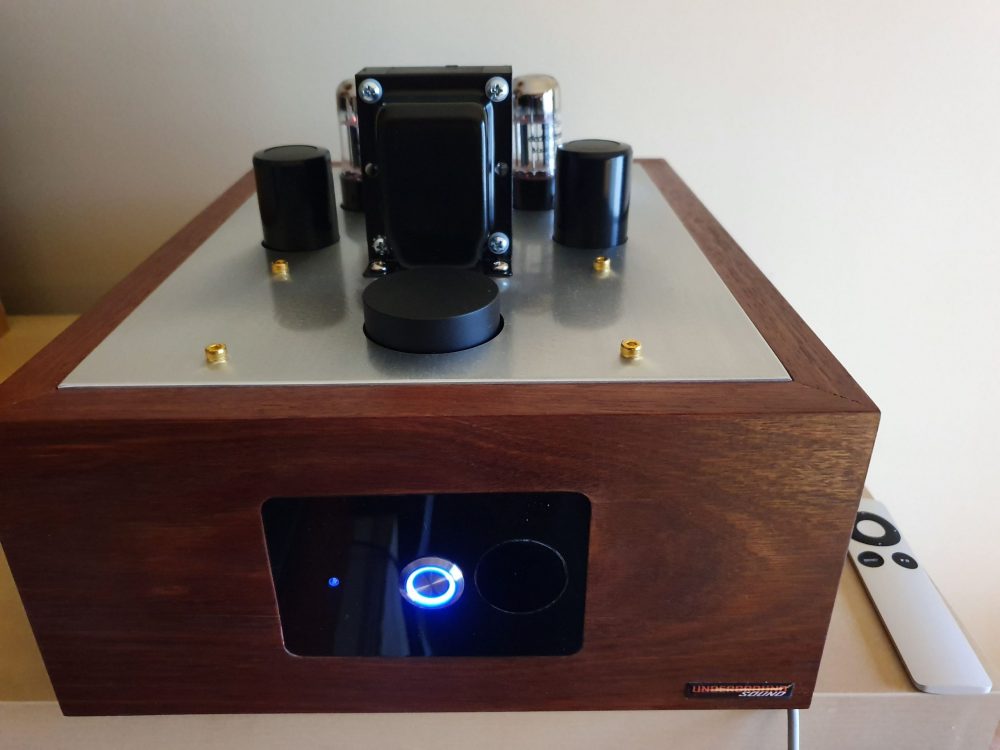
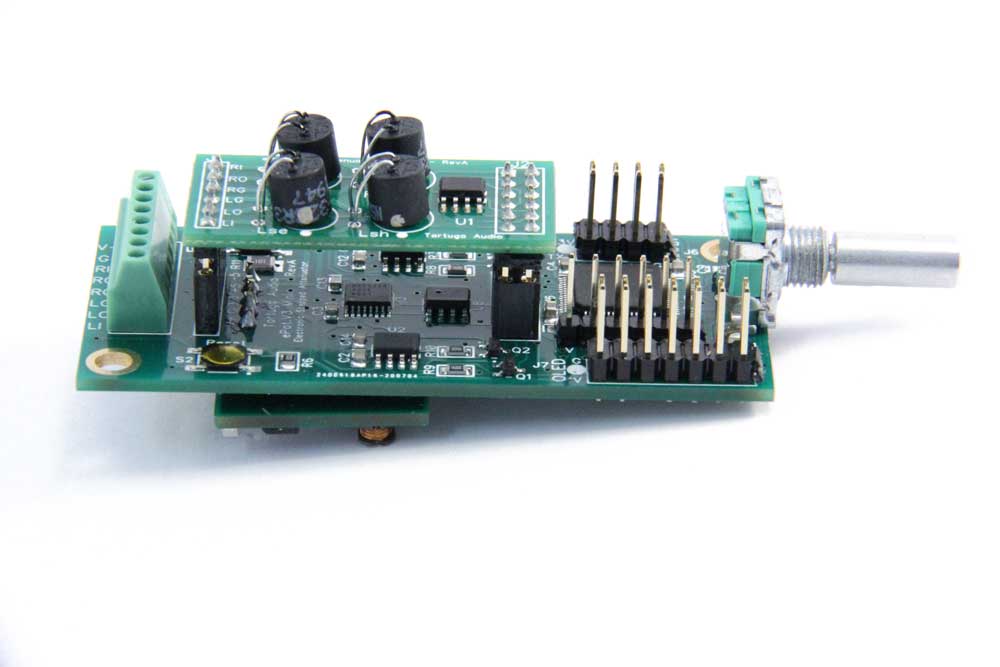
Nice example of a customer incorporating our ePot.V3 Mini electronic stepped attenuator/controller in a custom tube buffer/preamp design.
Undergroundsound.com is based out of Australia, focuses on bespoke valve audio and is run by Stephan Kissling (kisslingst@hotmail.com)
Tube Buffer
Electronic Stepped Attenuator | ePot.V3 Mini | Tortuga Audio


ePot.V3 Max for balanced audio attenuation
The ePot.V3 Max is now available for balanced audio applications. We've added online documentation that discusses the details of how to wire up a pair of Max boards for balanced audio attenuation.
This information can be found in the following link: ePot.V3 Max balanced audio attenuation wiring | Tortuga Audio
Here's a main wiring diagram...
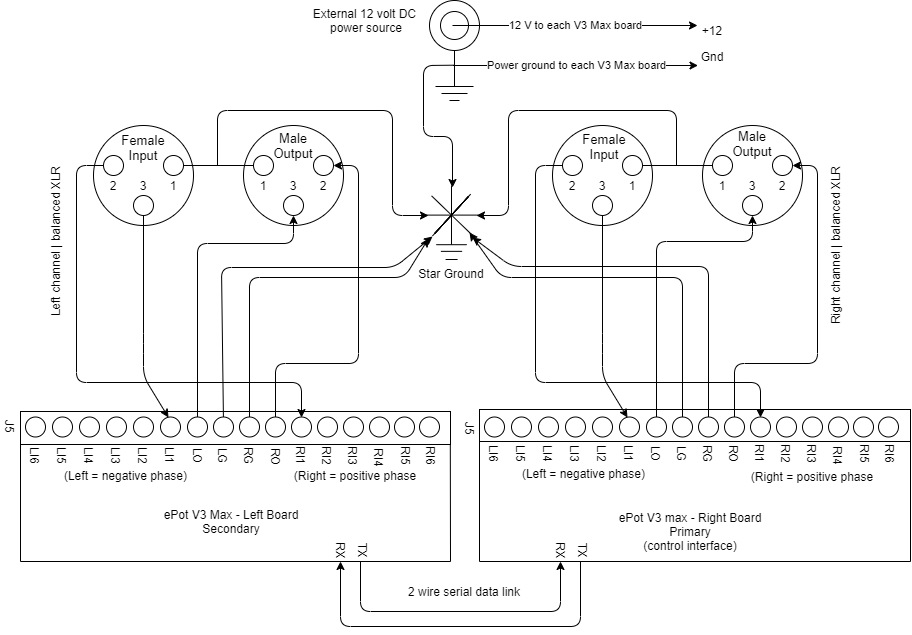
The ePot.V3 Max is now available for balanced audio applications. We've added online documentation that discusses the details of how to wire up a pair of Max boards for balanced audio attenuation.
This information can be found in the following link: ePot.V3 Max balanced audio attenuation wiring | Tortuga Audio
Here's a main wiring diagram...

Program selector without ageing contacts
Would you design also a program selector free of electro-mechanical contacts? Similar switches as in the stepped attenuator could be used. The Off isolation vs Frequency seems to support its use in that application.
Would you design also a program selector free of electro-mechanical contacts? Similar switches as in the stepped attenuator could be used. The Off isolation vs Frequency seems to support its use in that application.
Would you design also a program selector free of electro-mechanical contacts? Similar switches as in the stepped attenuator could be used. The Off isolation vs Frequency seems to support its use in that application.
The ePot.V3 Max uses low distortion split voltage analog switches that are good for line stage audio signal switching provided the signal voltage stays within a +/-4.8 volt range - usually not a problem given that most line stage devices operate within a +/- 1-3 volts. These switches are used in lieu of conventional electrotechnical relays for switching between input sources and also for isolating audio signals within with V3 Max board.
I'm not currently planning on coming out with a stand alone signal switching board...if that's your question.
What is more likely is the release of a hybrid plug-in attenuation module that combines discrete series resistors with LDR shunt resistors to create a unique 100 step series stepped attenuator as a lower distortion alternative to the current all-LDR attenuation module. By replacing the series LDR with discrete series resistors, the higher distortion usually associated with voltage drop across the series LDR is mitigated. Only 7 or 8 discrete series resistors plus 1 shunt LDR are needed per channel for a 100 step attenuator. You would need 200 discrete resistors per channel (400 total) to do this with 100% discrete resistors. At each volume step, the hybrid module signal path would only be going through 1 discrete resistor, 1 analog switch, and 1 LDR. The size of the plug-in hybrid attenuation module would be smaller than a credit card. 😀
How to get rid of all electro-mechanical contacts
Okay. Could you then possibly combine the program selector into the same device with the attenuator? It would be also nice if they could be used with the same remote controller.
I have an old integrated amplifier, and I have noticed that there are two electro-mechanical components I don't like:
Okay. Could you then possibly combine the program selector into the same device with the attenuator? It would be also nice if they could be used with the same remote controller.
I have an old integrated amplifier, and I have noticed that there are two electro-mechanical components I don't like:
- the rotary switch that selects the program source
- the volume potentiometer
Okay. Could you then possibly combine the program selector into the same device with the attenuator? It would be also nice if they could be used with the same remote controller.
I have an old integrated amplifier, and I have noticed that there are two electro-mechanical components I don't like:I remember they were good when they were new. Nowadays they are the main sources of distortion.
- the rotary switch that selects the program source
- the volume potentiometer
From your note it appears I've not been sufficiently clear about this. The ePot.V3 Max board DOES COMBINE THE INPUT SELECTOR/SWITCHING INTO THE SAME DEVICE WITH THE ATTENUATOR. Note the 2 circled lines of chips. Each of those 6 chips is an analog SPDT semiconductor switch input switcher/selector that's controlled by the board's microcontroller which is in turn controlled via a remote.
On the other hand the ePot.V3 Mini (not shown here) does not have any built-in input selector as it's a single input device and we don't provide a separate external input selector for the Mini.
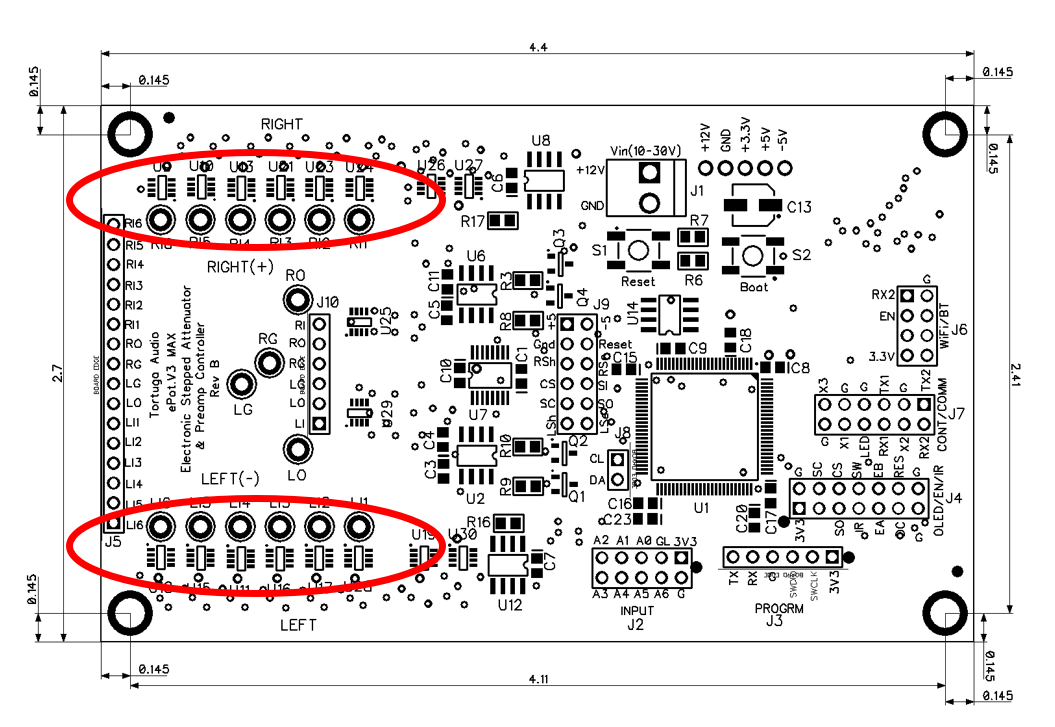
Thanks
Thanks for the clarification. I got a full answer.
From your note it appears I've not been sufficiently clear about this. The ePot.V3 Max board DOES COMBINE THE INPUT SELECTOR/SWITCHING INTO THE SAME DEVICE WITH THE ATTENUATOR.
Thanks for the clarification. I got a full answer.

- Home
- Vendor's Bazaar
- LDR Volume/Preamp Controller with 256x64 OLED Display & Remote